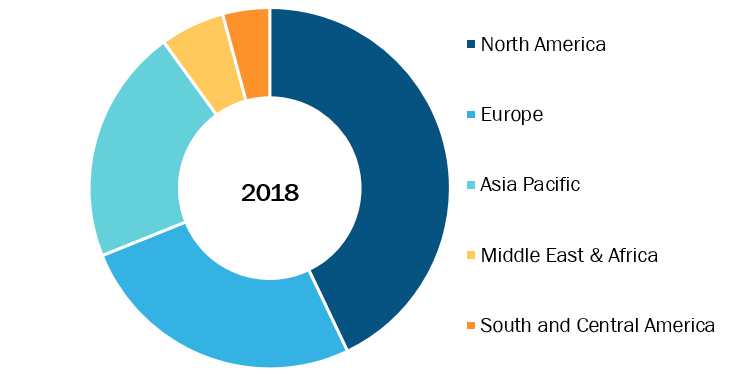According to the new research report published by The Insight Partners, titled “Product Lifecycle Management in Apparel Market - Global Analysis and Forecast to 2027”, the global product lifecycle management in apparel market is expected to reach US$ 1.82 Bn by 2027, registering a CAGR of 12.5% during the forecast period 2019-2027.
Nowadays, apparel industry is facing challenge in global retail markets. Apparel companies are realizing threat from various competitors. Product lifecycle management (PLM) helps the company by offering solutions that allow retailers and manufacturers to effortlessly capture new ideas at the front end of innovation to remain on trend. Product Lifecycle Management technology (PLM) is a business strategy that integrates processes, people, technology, and data to manage the entire life of a product from conception to disposal. Product lifecycle management (PLM) is one of leading enabling technology for new product development. A product lifecycle management in apparel easily keep track of suppliers and monitor compliance, key quality and cost metrics. With the help of PLM technology, all specifications, including product history is available in a few clicks. Product lifecycle management in apparel industry enhances the ease of merchandise planning, helps apparel companies choose the types of products that should be made. Designers also have a stronger vision on how to handle their time on the product by using PLM software.
Product Lifecycle Management in Apparel Market - Geographic Breakdown, 2018 Product Lifecycle Management (PLM) Market Size and Forecasts (2021 - 2031), Global and Regional Share, Trends, and Growth Opportunity Analysis Report Coverage: By Component (Software, Services); Industry Vertical (Automotive, Aerospace and Defense, Electronics and Semiconductor, IT and Telecom, Healthcare, Energy and Utilities, Others) , and Geography (North America, Europe, Asia Pacific, and South and Central America)
Product Lifecycle Management (PLM) Market Size, Share, & Growth by 2031
Download Free Sample
The deployment of product lifecycle management in the apparel industry, act as a business strategy which improves collaboration and inter-functional coordination hence, reducing the time to develop products and time-to market. The advantage of product lifecycle management in the apparel industry is increasingly being recognized as all companies want to save time and money, in the process of providing products or service to the consumers. Adoption of product lifecycle management has been a hugely beneficial for numerous players in the apparel industry. Some of the biggest companies who works for apparel are using it to enhance business agility. Additionally, with PLM the quality of the product improves and errors decrease during development of the product.
Furthermore, the use of product lifecycle management software as a strategic enabler is ground-breaking for companies. Most apparel companies have revenue growth as their corporate strategic goal. It is attained through constant product innovations, for which, strong product development integrated with product lifecycle management is a must. PLM allows technology for driving digitalization to support businesses in accomplishing innovation-driven revenue growth through a cost-effective, innovative, and time saving product management procedure.
Geographically, Europe held the majority revenue share of the product lifecycle management in apparel market in the year 2018, and it is expected to continue its dominance during the forecast period owing to the tremendous growth of the retail market. The apparel industry would continue to succeed due to the remarkable growth of online shopping in potential countries such as the US and Canada. In 2018, North America and the Asia Pacific held the second and third position in the global product lifecycle management in apparel market. The other growing regions, such as the Middle East, Africa, and South America, are anticipated to offer significant growth opportunities for product lifecycle management in apparel market players during the forecast period from 2019 to 2027.
The global product lifecycle management in apparel is anticipated to exhibit an impressive growth rate during the forecast period of 2019 to 2027.
The primary driving factors contributing to this market growth include positive economic outlook and growing technology. However, factors such as limited investments by small retail business in PLM software may hinder the market growth in the coming years. In spite of these restraining factors, increased spending on product lifecycle management in apparel in both developed and developing countries is expected to fuel the future growth of the product lifecycle management in apparel market.
The market for product lifecycle management in apparel is segmented based on type and end-user. Based on the type, the product lifecycle management in apparel market is segmented into CAD and CAM. Based on end-user, the market is bifurcated into retailers, manufacturers, and others. Geographically, the market is fragmented into five regions, including North America, Europe, Asia-Pacific, Middle East & Africa, and South America.
There are some very well-established market players operating in the product lifecycle management in apparel market. The top five players in the market include Dassault Systèmes, Gerber Technology LLC, PTC Inc., Visual Next, and Lectra S.A.
The report segments the global product lifecycle management in apparel market as follows:
Global Product Lifecycle Management in Apparel Market – By Type
- CAD and CAM
- PDM/CPDM
Global Product Lifecycle Management in Apparel Market – By End-User
- Retailers
- Manufacturers
- Others
Global Product Lifecycle Management in Apparel Market – By Geography
- North America
- U.S.
- Canada
- Mexico
- Europe
- France
- Germany
- Italy
- UK
- Russia
- Rest of Europe
- Asia Pacific (APAC)
- South Korea
- China
- India
- Japan
- Australia
- Rest of APAC
- Middle East and Africa
- Saudi Arabia
- UAE
- South Africa
- Rest of Middle East and Africa
Contact Us
Phone: +1-646-491-9876
Email Id: sales@theinsightpartners.com